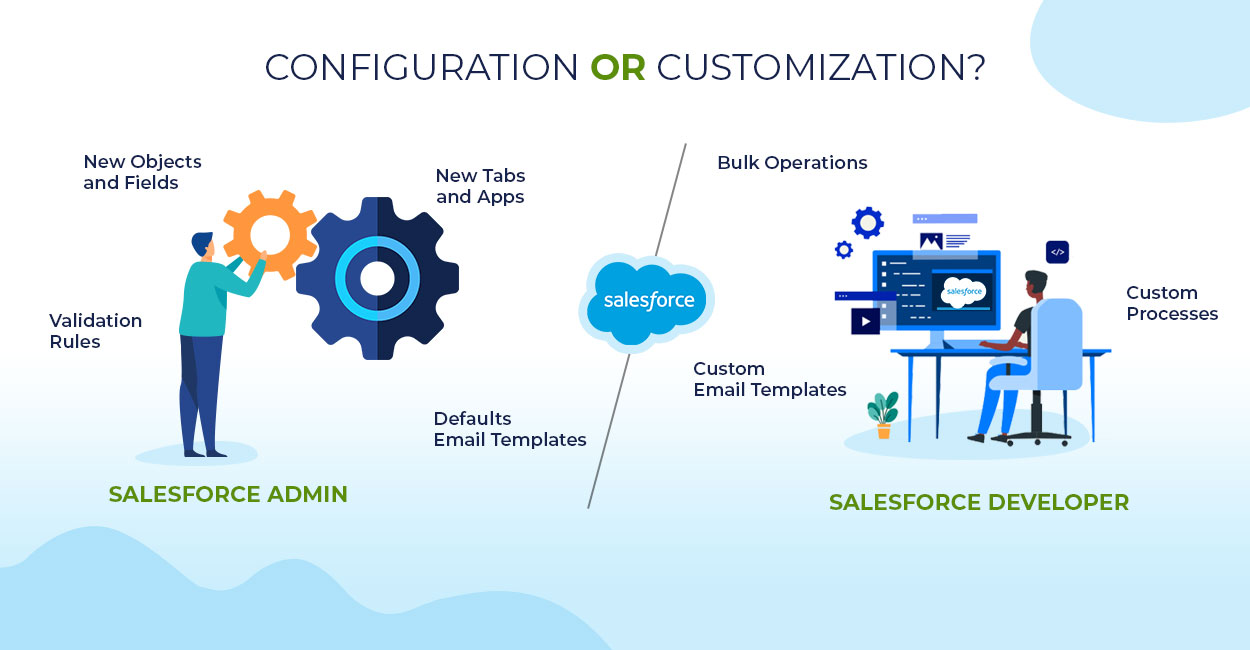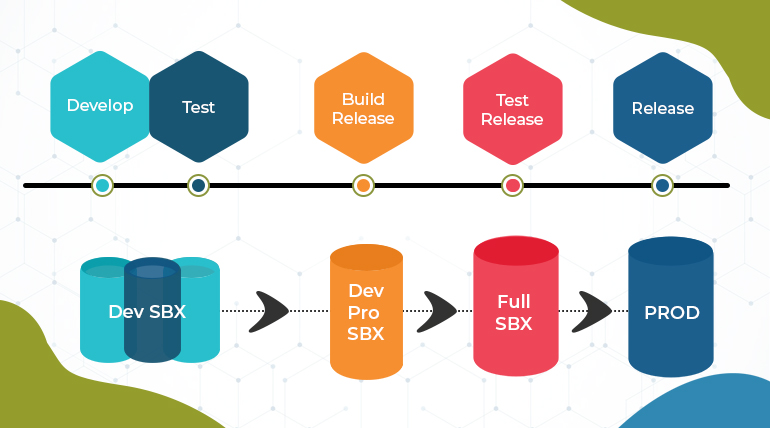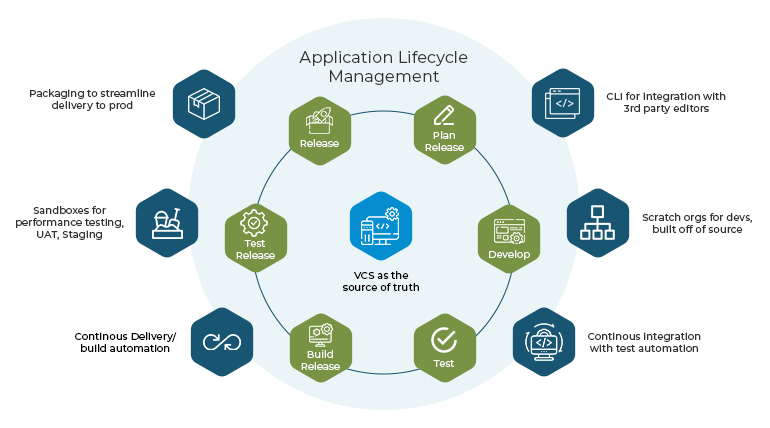Salesforce Testing- A Much Needed Activity
In the modern software development world, businesses are using more and more complicated tools to meet release deadlines that move at the speed of light. As tools and methods for making software get better, so do the things that need to be tested. Modern testing teams do a lot of testing that is specific to certain platforms or use cases as a result.
Salesforce testing is without a doubt an important part of a QA team’s arsenal today. In addition to being a very popular CRM solution, it is a complex ecosystem of business tools that can be changed to fit any number of use cases.
Since integrations and changes must keep working even after multiple cloud releases, this environment requires a lot of testing.
In this guide, we’ll talk about what Salesforce testing is, what its most important parts are, why it’s important in modern workflows, common problems, and best practices. We want to help you choose the best solution for the job so that your Salesforce testing goes smoothly, works well, and is enjoyable.
What is Salesforce Testing?
Salesforce testing is important to make sure that this customization doesn’t mess up other functions and that changes are made in a way that matches the design.
As Salesforce is a popular CRM tool for support, sales, and marketing teams worldwide and it comes with configuration and customization both so from here we can see the need for QA arises.
Configuration in SFDC–

Salesforce configuration is the process that is performed within the CRM system. This means we can add a new field to our Salesforce that uses a formula or a specific rule to achieve business outcomes. In short, Salesforce configuration means that user-defined values will allow a particular module or feature to operate in the way we want for our business needs.
And when we say adding a new field or logic means new development so QA needs to make sure the existing and new logic work properly independently and integration of such logic should work fine.
Let’s Understand customization – customization refers to adding new features or functionality unavailable or not accessible in the default application environment. It involves the custom development of code and includes external tools for developing functions that meet business needs. Here as well we are observing that new development and new other associated plugins should work smoothly and business requirements should not be disturbed and work the way you want.
So, on both terms’ configuration and customization, we observe this in an addition to a piece of code in existing Salesforce code. So, QA must check all element, flows, and logic which should not disturb. So, one core needs to deploy QA on Salesforce projects is to ensure that all aspects of the application are functioning correctly and meet the users’ needs.
As we identified here a Salesforce Quality Engineer understands that Salesforce has its own business processes though he can verify and validate the Salesforce in the way it’s designed for your system, as it’s not another website testing it needs efforts to understand the core Salesforce concept as well as business process introduced to accomplish your actual businesses.
Let’s take a look at some of the good things about hiring a QA pro. As I talk about the pros, I’ll also point out some troubling problems that need to be fixed.
So, Salesforce QA has many benefits, but it is also important to find any problems that could affect how the system works. QA can help with these things. Here, let’s look at some scary Salesforce features and I’ll tell you which ones might affect how they work and which ones might scare you.
Because these problems will affect your users’ needs and your business, we need to take steps to stop them. In the bullet points below, we could add a button that tells people what to do.

- Inactive Users – Once a user is created, they cannot be erased. We offer a way to clean up your inactive users in Salesforce through ongoing monitoring.
- User Event Monitoring – Tracking user behavior to identify dangers and mitigate them. As we need to monitor user activity to prevent any type of data breach or access to secured information, it helps to be able to recognize subtle but suspicious behavior.
- Bad Data – Since duplication, import problems, and invalid data (email addresses, for example) are all bad, we can conclude that these are traps that your users can easily fall into.
- And in order to prevent such instances, regular QA effort is required. Therefore, we are delighted to help and offer the finest method for such data work.
- Deployment Errors – When a new development is completed, we must confirm that it will function reasonably. To achieve this, we can inspect the deployment log, associated activities, and postproduction testing.
- Slow-to-Load Components – Performance is now the most important factor for every organization. Even with a strong Internet connection, why are my pages operating slowly? As a result of the numerous Fields in your record detail component, which can adversely affect page performance, an overloaded system is a genuine nightmare. So, lightning is visible in SFDC.
- The Salesforce QA team has a lot of work to do; they are in charge of everything that needs to be done on-site. This is a complex element of the job that is different from testing websites.
- We may quickly sum up all Salesforce-related aspects as follows:
- A manual that includes Additionally, this is where functional testing to verify that the generated solution matches user needs come in. unit testing Through Apex Unit Tests, Salesforce enables customers to conduct unit tests on individual classes, methods, sets of classes, and entire organizations.
- Automation – Continuous/repeated activities with predictable results can be automated to increase efficiency. We can automate both the Salesforce web and API (#SalesforceAPIAutomation).
- Load – Although it is not necessary to use a specific tool to evaluate the performance of the site, we must confirm that each page loads properly and that each component reacts appropriately and promptly due to internal triggers, email activity, etc.
- Security – As for security, it must be regularly examined for any suspicious activity that could compromise your Salesforce web/cloud-based application.
As with Salesforce, testing is done in the Sandbox environment because it is separate from Production and won’t affect Live company data.
Any of the following changes should, as a general rule, be tested in the Sandbox environment before being released to the Production environment because doing so will reveal any potential problems, weaknesses, or areas that need improvement.
- Modifications to integration workflows
- Small layout modifications to the website
- New API endpoints added for verification in regression instances
- New advertisements released by Marketing

However, in order to establish a robust process for Salesforce testing, we must adhere to several best practices, such as:
- Effective Test Strategy and Test Planning
- Adding a Test Environment
- Scripts for automated tests
- Rectify issues quickly
- Get Stakeholders Involved in UAT Testing

In a future Salesforce blog, I’ll talk more about Salesforce testing, including its security and other parts like automation, API automation, testing of Salesforce triggers, and more.
I’m going to stop here because quality assurance is always a checkpoint before moving something to the next level of acceptability, like UAT or production. When Salesforce is set up, it is highly recommended to customize the application QA code and set up the administration module.
Last but not least Quick Hacks on Salesforce
Some quick Salesforce Acronyms:
- SFDC – Salesforce dot com
- CRED – Create, Read, Edit, Delete
- CRUD – Create, Read, Update, Delete
- ERD – Entity Relationship Diagram
- OCR – Opportunity Contact Role
- WFR – Workflow Rules
Conclusion
Salesforce is a very popular and widely used cloud-based CRM system, so understanding how to test it is important for many businesses. With the help of this manual, you can learn the basics and nuances of Salesforce testing and then apply what you’ve learned to your own use case.
















